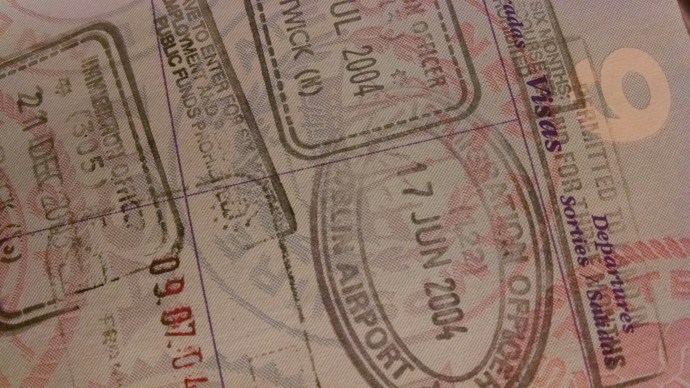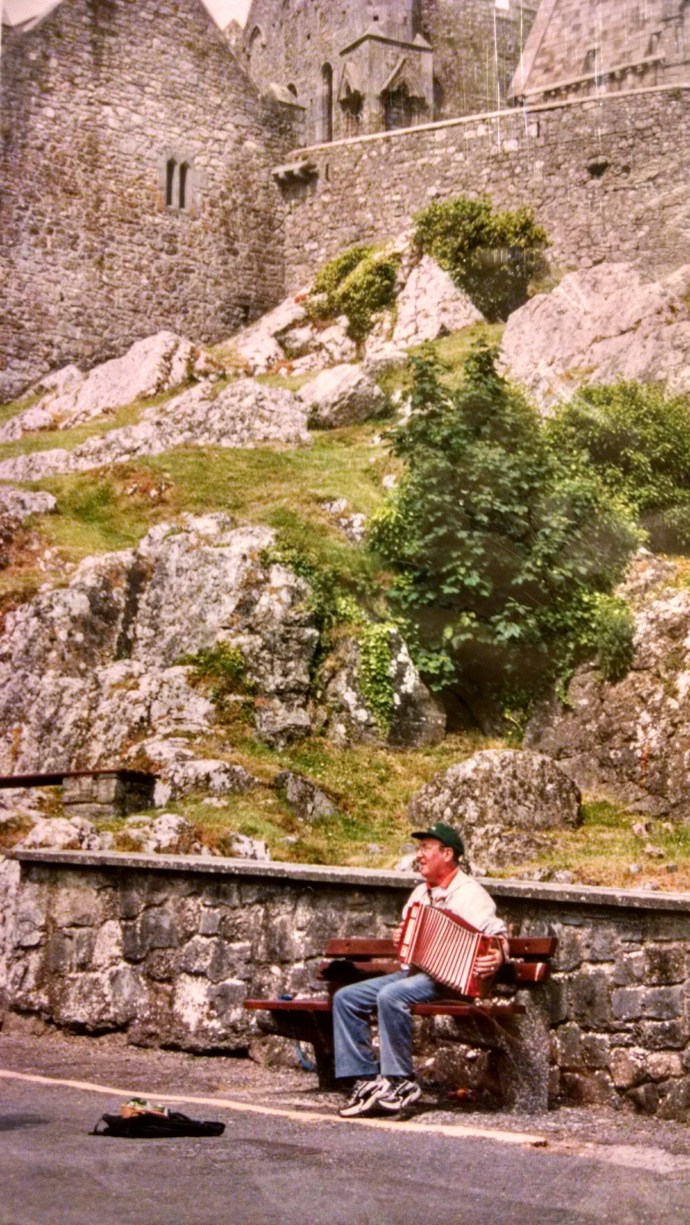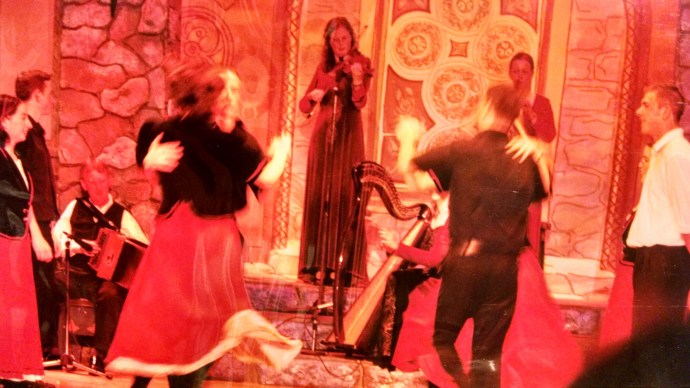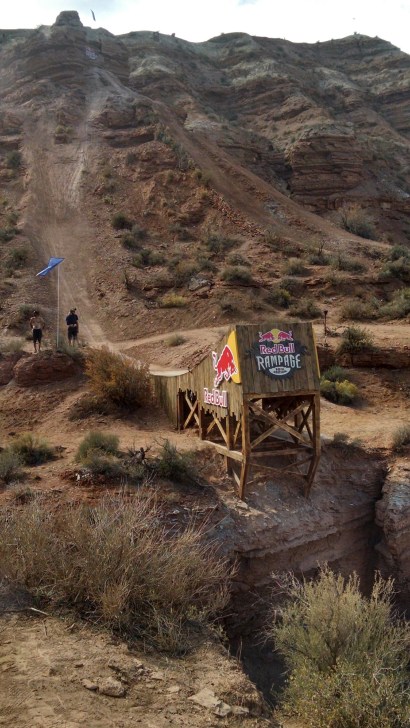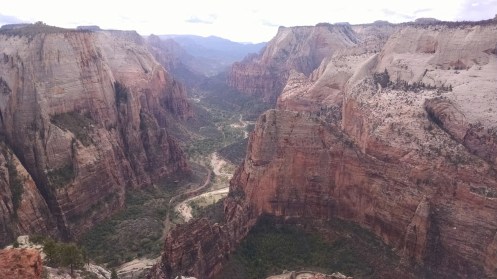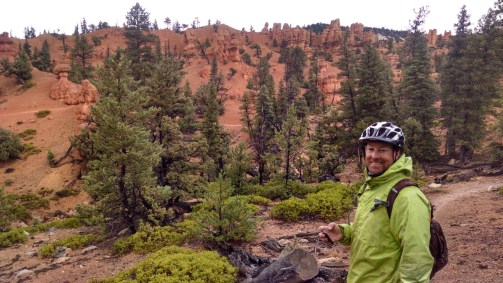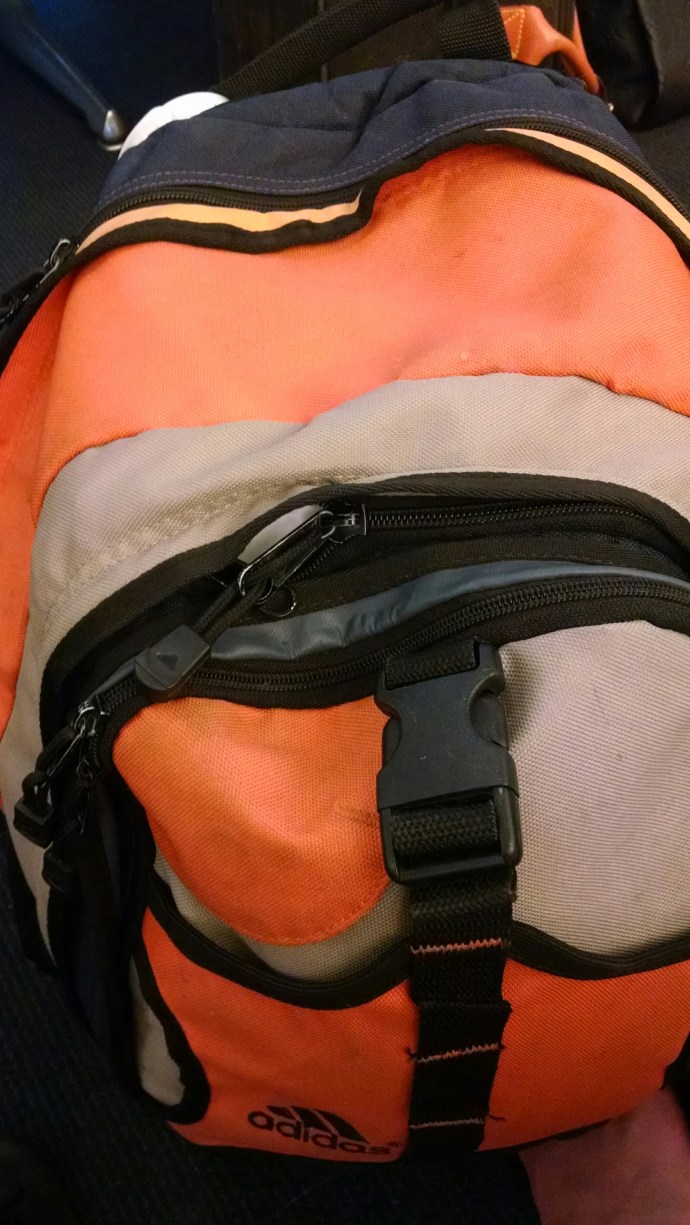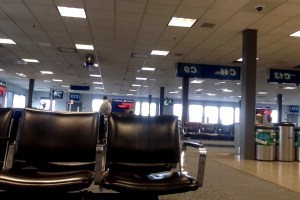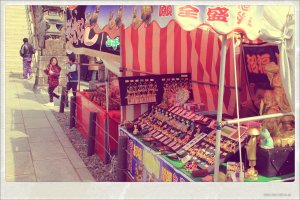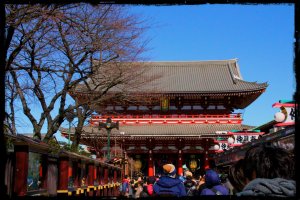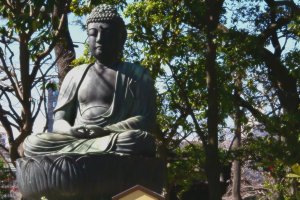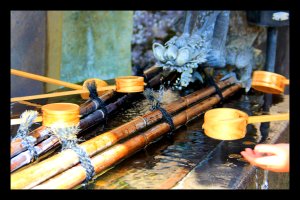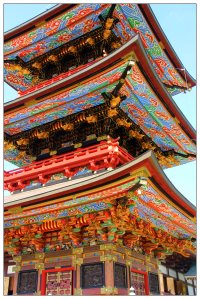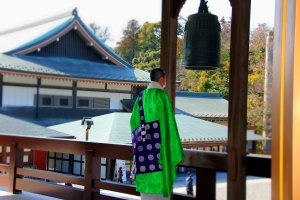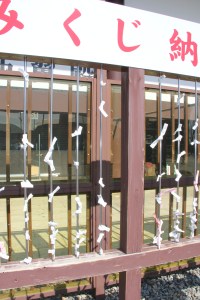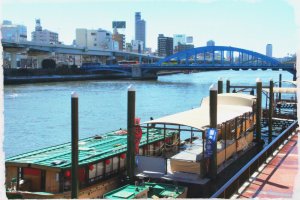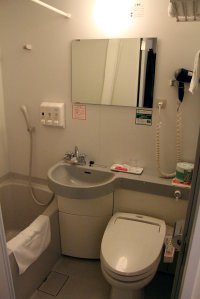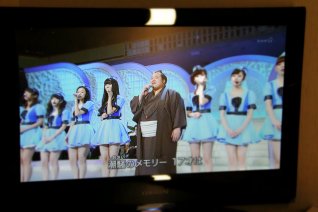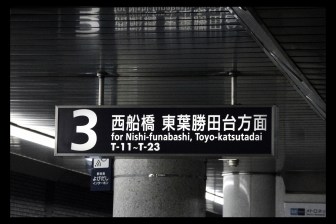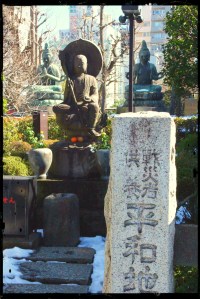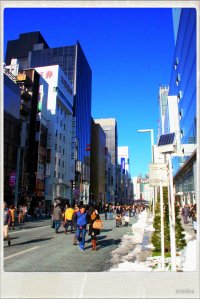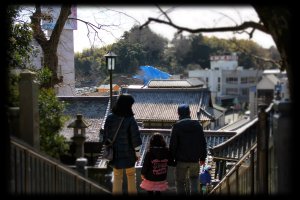From The Weather Channel Android App: https://weather.com/news/climate/news/2018-11-23-fourth-national-climate-assessment
I Dream of Green
The Emerald Isle is so known for its lovely scenery, to be sure, but certainly the mystique of Ireland travels much further and deeper than mere rolling green hills dotted with sheep and crumbling stone castles. It is music, the Craic, the drinks, namely Guinness and whiskey, the food, mostly hearty but delicately made, and the friendliness of the kind albeit sarcastic people. Ireland so mesmerized me I returned time and again, a total of five trips across the pond from American soil.
My family, once, long ago, hailed from Ireland. This phrase can be repeated by most Americans, with so many donning Irish last names or at least laying claim to Irish roots each St. Patrick’s Day. My father raised me with Irish folk songs that to this day I still hum to myself, and I proudly carry the last name that at least briefly dawdled in The Republic.
So, at 25 I set out on my first adventure into the wilds of Ireland, looking for some fantasy of Ireland. Yet, all my fantasies came true, fantasies I still cannot replicate except by story.
I came to Ireland by way of Wales, and Wales by way of Stratford Upon Avon, and there by way of a train from Kings Cross. I stepped from the ferry onto Republic soil to find a bustling Dublin not much different from middle sized American cities. Luckily, even before visiting the Blarney Stone, I was given the gift of gab, and soon made close friends at a random pub, all who excitedly proposed to show me about the country. Note I did not say city- it was true that I was introduced to the width and height of Ireland in that trip and several to follow.
The lessons and experiences run deep in my memory now. Inexperienced in international travel, I excitedly tried a shot of aged Irish whiskey that is not imported to any country. Foolishly, I chugged it all, like any brazen American would, only to look into my new friends’ eyes of sheer horror. “Our whiskey,” one said after a painful group silence, “is for respectfully sipping.” I never made the mistake again. And in truth, whiskey never tasted so good as when I took my time to really smell it, feel it roll over the tongue, absorb into my taste buds.
On we went, now on a quest for the traditional culture. While Dublin was surreal, it was also too modern. I wanted the Ireland my father’s folklore described and my friends were happy to oblige. We happened into the country then by cramming six adults into what felt like a four person car, to some small town near the Cliffs of Mohr, and that’s when it happened.
I found Ireland.
The “real” Ireland. An older man in a cap dutifully playing his music to the audience of a stone castle.
I lingered to listen, but was soon whisked away to a “local” to have fresh fish stew and an artisian cheese plate.
Later still, we sat for a local dance company of young folk dancing traditional reels.
I thought my friends, all Irish but for one relocated Frenchman, would be bored of the old fashioned show, much like Americans are too often tired of the replications of the Civil War. But they weren’t. In fact, they were beaming in a “this is my heritage” kind of way. They were relieved that I’d enjoyed it, too.
After the dancing, it was still early enough that pubs were brimming with cheerful drinking locals. We wandered in to almost immediately find what I’d only read about: the Craic. The influence of the phrase “what’s crackin?” this was the rarest cultural event, so I was told. A circle of locals of varying ages took over the center of the pub to play unpracticed folksongs together, just for fun. They only took breaks when their beer glasses were empty.
The next morning, after an Irish breakfast of grilled tomatoes, eggs, toast, and tea, I ventured to revisit the nearby castle.
There was the immediate feeling of age, and not age in the American sense, which is so negative. But age as in how this culture has evolved, survived, held fast. There is no other place I have ever felt so at peace, both culturally and personally. This first trip lit within me a fire to revisit time and again, but also a furious love for other cultures and the art of travel itself. I still dream of Ireland and cannot wait to return.
I travel not to escape, but to better know my place as a human on this great earth.
Rampaging Through Utah
Every state in the Union hosts some amazing event that draws both tourists and locals alike. Utah has many such events, ranging from music to film to Shakespeare to food festivals, but one that stands out is the yearly Red Bull Rampage in Virgin, Utah. While this event is less festival and more spectator sport, the competition has evolved into the center of all things free ride mountain bike.
Over the ten years that Red Bull has hosted this downhill mountain bike challenge just outside Zion National Park, the sport has evolved tremendously. In fact, this event itself has been the catalyst for bigger hucks, more technical steeps, and more unthinkable air tricks. However, with bigger also comes the bad: injuries of the athletes far exceed those in previous years.
It is both the thrills and the spills that draw the crowds year after year. Conveniently occurring each year on a Utah specific four day school weekend, families, college students, and obsessed bike fanatics alike all descend on the area, filling hotel rooms in St. George, pay camping in the famous Zion National Park, and even debaucherous BLM free camping near the venue.
Everyone who appreciates athleticism and biking should consider spending a full four days to rampage through southern Utah. Tickets are not available at the gate, however. About two months in advance, Red Bull begins to sell tickets in small batches off their website in an almost secretive fashion. It is not widely advertised and each batch sells out quickly. Stay alert and you can certainly obtain tickets. When you get to the venue, you will understand why so few tickets (aka wrist bands) are given out.
The weekend of the event, camping and hotel rooms sell out. Plan on improvised camping if you don’t have a reservation, and also plan that most other people also are improvised camping, too. Some serious downhillers camp at the old Rampage venue to ride the old course after the event, which is about a 15 minute ride on bikes away. Be prepared for shenanigans here, both legal and otherwise.
We opted to stay in Zion at the South campground. Patience is key here- you cannot reserve spots, so “trolling” until a place is vacated is necessary in busy camping seasons. The drive to the venue from here is about 20 minutes. The obvious plus side is that you can now experience the national park when not in Virgin.
Planning also pays off. Very little is offered at the actual site or in Virgin itself. Camelbak provides cool water if you bring the container. A local food store offers limited foods, but sadly no free Red Bull drinks. Since you cannot drive the 3-4 miles of slurpy sandy dirt road, plan to carry your necessities by foot or by bike. We chose to ride our cross-country bikes with full backpacks. Two days of events (qualifiers and finals) go much faster with all the appropriate needs, like small chairs, sunscreen, hats, food, and secret beers that you don’t let security see.
But when it is all done, then what? Some may keep riding in the area such as the old course, but cross-country riders may also enjoy the hour or so drive to Gooseberry Mesa for the challenge of slick rock. Or maybe you need a break from biking and want to hike inside Zion, such as Observation Peak, the view from which is shown below.
Another option is to drive up to Bryce Canyon and try one of a plethora of biking (or hiking) trails that wrap around hoodoos and top out over red vistas. One fun trail not even in the park is the Thunder Mountain Trail, which if done as a loop incorporates a nicely paved bike path to meandering single-track that at one point strolls along the spine of a mountain.
What ever you choose, take advantage of all the amazing things around the Rampage, really taking the time to explore such a unique area, and getting to know Utah for more of its gems.
What Happens When You Live In Vegas, Stays With You
Las Vegas, Nevada is widely known through the universe as a “party town,” where the phrase most identified with it, What Happens in Vegas, Stays in Vegas, became a mantra of visitors and Hollywood films alike. As the city built itself from pit-stop in the desert to gambling mecca to party town, it has grown into a fascinating mix of weekend fantasies and real-life every day locals. The mob had its part in the birth of the town, Bugsy Siegel namely, whose vision of the city lived long after he was murdered. After El Rancho was built, the rise of the Sahara, the Sands, the New Frontier and the Riviera all came long by the mid-1900s, creating the foundation of what today is called The Strip. Interesting fact, many of those establishing hotel-casinos are now gone, razed to the ground to build bigger and better. In the 1950s and 60s, gambling was an obvious draw, specifically slot machines, but also showgirls, fine dinning, and entertainers like Frank Sinatra, Dean Martin and Elvis Presley all brought tourists by the millions. Not too much has changed, though the shows and buildings have multiplied and transformed, constantly making way for new experiences. One would have to stay nearly a month to see every quality show now available, a month and a half to include the bad ones, too. Restaurants far exceed the high quality dinning in most big cities, as well as an increase in other activities like ziplining Fremont Street or riding the largest Ferris Wheel in the world. The tourist area (aka The Strip) is certainly entertaining, fun, exciting, and with enough bright lights and glitz and glammer to make you stay, but there is more to this city.
It is still a town that many envision as criminal, devoid of social skills or morality. Assumptions made about the area and its residents or quality of life are made reflecting three nights of no sleep, lots of “free” booze, and questionable activities without ever actually interacting with “what locals do.” When I first moved to Las Vegas, and again when I was moving away, I encouraged these misconceptions, agreeing with people while I visited other states that Vegas tends on the side of despicable, or at the minimum, a lifestyle far from what I would ever want, one devoid of outdoor recreation sans motors, one without purpose, one that wasn’t fulfilling. I wouldn’t admit what my life was actually like, either to them, or to myself. Perhaps it made it easier for me to move, convincing myself that Las Vegas isn’t so awesome after all.
Four years now exactly since I moved from Nevada to Utah, and I now catch myself offended by those who badmouth the desert city. True, I’m deeply happy here in Park City, but not for lack of contentment in Las Vegas. I don’t often speak to naysayers about the beautiful things in that 24-hour town, but instead let them rant, even some times agree with them. When my boyfriend’s kids recently went to Vegas with their mother, they had very few positives to speak of my former town; immediately I sought to right their misconceptions.
I want to tell them, tell all of you, about how gorgeous it is off The Strip, away from the “tourons”, deep into ordinary, regular life. For a period of time I ventured into every single club possible, taking about two years to burn myself out. From there, I spent the rest of my 13 years of residency enjoying trail running and rock climbing and mountain biking out at Red Rock and its surrounding landscapes.
 I had become a teacher after living in the town for about a year, (nope, not a stripper or a cocktail waitress, not that either job is a bad choice since both make 5-10 times as much as a teacher) and in fact still am a teacher. My school’s backyard, essentially, was Red Rock Canyon National Conservation Area, so after work I would take a run on the dusty trails and then just sit, soaking in these unusual rock formations and vibrant colors. Even after years of time there, it never ceases to amaze me.
I had become a teacher after living in the town for about a year, (nope, not a stripper or a cocktail waitress, not that either job is a bad choice since both make 5-10 times as much as a teacher) and in fact still am a teacher. My school’s backyard, essentially, was Red Rock Canyon National Conservation Area, so after work I would take a run on the dusty trails and then just sit, soaking in these unusual rock formations and vibrant colors. Even after years of time there, it never ceases to amaze me.
Now, an avid climber, I think back to my first route ever climbed outdoors, a 5.6 also in Red Rock named “Pancakes and Porn”, attempting my first route in the blistering sun. Honestly, I remember very little about the climb itself aside from the fear and simultaneous excitement, and really only recall hiding under a rock afterwards for any sort of shade. Yet this is one of the world’s centers for climbing, a completely unique rock with unusual climbs.
I passionately miss the hard-pack red clay mountain bike trails out at neighboring Cottonwood Canyon, where I cut my teeth on the feel of a dual-suspension Gary Fisher. But it wasn’t the bike that changed me. It was the fast single-track, the witnessing wild horses hanging out in the shade of the hills, the constant rattlesnake dodging, the horny toads judging me from their shady bushes. Driving to the trailheads we often passed through the tiny town of Blue Diamond, passed Spring Mountain Ranch and its summer outdoor theatre, where audiences lay out blankets on cool grass and watched local thespians under the stars.
Hiking became a serious pass time for me as well, going with my family and my roommate on long walks, hikes, and backpacking trips. I joined the Las Vegas Mountaineers Club to camp with like-minded people, join hikes, backcountry ski, rock climb, even learning self-arresting in snow. Though the general thought of Las Vegas is blistering heat and endless boring desert, the truth is the heat is only unbearable for about four months, with two warmer months, and the rest of the year windy, cold, or perfect. 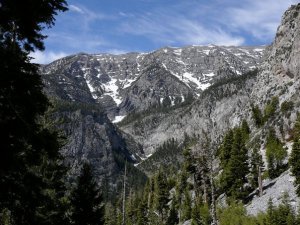
Though many of my friends did not climb or mountain bike, most did hike. I often filled my weekends with views of the mountains just outside of Las Vegas. And before anyone says, “There are mountains?” Let me share what I did for the last two years of my life there: I was a ski patroller. Nope, didn’t have to fly to another state or drive to Lake Tahoe- a 40 minute drive got me up to Lee Canyon’s Las Vegas Ski and Snowboard Resort, once named Ski Lee before Powdr Corp purchased it.
 Once a week in winter, in general, I would spend my time volunteering as a ski patroller, developing another extended family who loved winter and snow sports as much as I did. Often, my few friends who loved to snowboard too would visit me when I worked, or when I was lucky when I wasn’t working, so we could ride together. Only two main lifts, true, but the views were amazing, the air fresh, and the snow fluffy. At least once during my two-year stint did we get so much snow we couldn’t open.
Once a week in winter, in general, I would spend my time volunteering as a ski patroller, developing another extended family who loved winter and snow sports as much as I did. Often, my few friends who loved to snowboard too would visit me when I worked, or when I was lucky when I wasn’t working, so we could ride together. Only two main lifts, true, but the views were amazing, the air fresh, and the snow fluffy. At least once during my two-year stint did we get so much snow we couldn’t open.
There is so much more here, too, but much of it is very personal. Here is where I became a part of Endless Productions and acted, wrote plays and saw them perform them, danced, belly dance at that. I witnessed my friends get married, have children, buy homes, start businesses. Endless, for me, means the friendships I made that are forever, these amazing personalities that have driven me to be the person I am today. If it weren’t for them, I would only be half of myself. Most of these performers were born and raised in the valley, and also take personal offense if you say Vegas is the center of debauchery. Maybe for some, but these are the folks who hike, backpack, perform, cook meals for their friends, and love me despite the distance. These are the friends who are, many of them, teachers, too; and parents, spouses, environmental activists, gardeners. And then there is my family, almost all involved in education, my nephews both obsessed with soccer and Mine Craft and hiking and water parks.
So now, if I were to hear someone say “How could you live in such a horrible place?” or even my favorite, “What hotel did you live in?” I will try my best to change their opinion. I miss Las Vegas, though my home is now a six hour drive away, and I miss everything that made my world what it was while I was there. Things are different now, I know, but my love for those things that defined Las Vegas for me, will never change. In the end, travel should not be about negative judgements based on a short affair with a city- spend time, learn, experience, and expose yourself to something beyond the glitter and the lights, beyond the tourist traps, and visit the world of the locals, and see through the local lenses.
Stand-by for Stand-by Packing
Packing for a trip is, for many, an arduous affair. Despite detailed lists and checking twice even after packing, it is inevitable that either items neglect to make their way into a suitcase or never make it on the packing list in the first place. It is terrible to find yourself in a remote locale without a toothbrush or socks or sunscreen. It is terminal to forget phone chargers and prescriptions.
Add in the next challenge: packing for carry-on only. While for short weekend trips this is more do-able, there is still an ever presence of anxiety over what needs to make it, what can be cut for space, and what you forgot no matter how long and hard you pondered. Thus the Ultimate Carry-on Packing List! Having traveled the world on many wonderful excursions, I have had the practice of stuffing everything necessary into one bag that I then hoofed over miles and trains and planes and generally about a month of time. Packing light therefore, became key.
And lately travel for me is stand-by via a pilot friend of mine. Stand-by flight is an art form in and of itself, without including packing for it. Yet preparing to fly carry-on only provides expansive control over your immediate travel experience. Checking luggage isn’t inherently bad, though I must attest to several incidents where my checked bags didn’t run as fast as I did from a late touch down to a connecting flight. It never hurts to be prepared, or to at least bring the essentials on-board, just in case. To pack for carry-on, start with a list of your essentials.
Pre-printed generic lists are a great way to start, but be sure to edit as needed based on your requirements and your destination. For example, I am currently headed to Atlanta mid-June: sweatshirts, jeans, and jackets are not needed, but sunscreen and allergy meds are as I am sensitive to both sun and trees…pretty much anything natural. Next, I find the air approved carry-on size luggage. Generally for me this is a multi-zip backpack. Luggage for carry-on needn’t be expensive, just functional.
This particular backpack, though ugly and old, has been everywhere with me domestically over the past 10 years. It has been my travel companion for so long because it has an organized front small zipper where I store immediate essentials like pens and chargers, a middle zipper that is just the right size for magazines, and the larger compartment for toiletries and clothing. Two zippered side pockets on either side offer storage for snacks or socks.
Once you have your luggage, you can determine visually first then physically how much you can reasonably bring. What is most important to you is determined by what makes you comfortable as you journey to new experiences. Whatever you bring, keep it light and simple; don’t be that “noob” traveller with sneakers, a sweatshirt, and two Nalgene bottles attached to the OUTSIDE of your bag. If it doesn’t fit in the bag, it will fit back in your closet at home. For the purposes of this posting, I will exemplify the Ultimate Carry-on List by using my own packing strategy. Lay out the proposed clothes from your list. Try to mix and match clothes so that you can pack less but have multiple outfits. Pinterest has ideas if you get stuck. This goes for shoes as well. I limit my shoes to two: one that could be worn to work, and one that could be worn to the gym.
I try to pack one of every genre of clothing that will work with each other: one pant, one nice shirt, one T-shirt, one dress, one shorts, one skirt, one tank top, one bikini, and one sweater just in case, etc. I use workout clothes as pajamas: sweats or workout tights in particular. I can do this because, seriously, how often do we REALLY workout when we travel? However, if I needed workout clothes for a random yoga class, I want to have them available. Lay the clothes out to see that they all go together (the nice shirt goes with the skirt and pants etc), and then I start rolling the clothes (to take less space and have less wrinkles) and placing them in the large pocket of my bag, shoes on the bottom. Large clothes and shoes should be worn on the plane if possible to take up less packing space. Still not sure how to fit it in? Watch this packing video for ideas!
Next I work on toiletries. Avoid using the “travel size” buys as they are both massive markups for the consumer and wasteful for the environment. Instead, fill reusable travel bottles for your favorites. I keep mini bags to separate my toiletries: one bag for hair, one for face and teeth, and one for makeup. Keep products, whatever you use, to the absolute minimum. Unless you are attending a fancy affair, makeup should be just the essentials. For me, that is SPF tinted BB cream and mascara. If I have room, I add in a few more less-than-essentials like skin cream, a neutral eyeshadow, and blush. These three packs go into a catchall bag, and is placed in the large zipper next to your clothes. The middle compartment is where I keep my work, whether it is more for fun or is actual work. Paper, magazine, and small lap top all equally fit in this pouch. The front pocket then is reserved specifically for grab and go essentials: hand sanitizer, baby wipes, sleep mask, medications, chargers, pens, gum, lip balm, and deodorant because, well, travel can be stressful. The side pockets nicely hold socks and underwear on one side, and snacks on the other. Don’t mix these up when you are starving, however.
When packing treats for yourself, make them low sugar, low salt, and high fiber or protein. My favorites are unsalted nuts, a hearty apple, or an energy bar. Also bring at least one small empty bottle for water. If you are a woman who travels with a purse, make it an easy to travel with bag, not a Mary Poppins endless purse. I prefer a bag with a convertable shoulder strap, three or more compartments for keeping things organized, and most importantly, zippers to keep your organized things IN the purse. That said, keep the purse small and only the absolute necessities. I keep my wallet with only one credit card, insurance, cash, and my ID in one pocket, another pocket holds my lip balm and cream perfume. Yet another pocket is non-essentials like face powder and extra cash, and the final pocket is for my cell phone.
Really, it just comes down to simplicity. Keep your needs simple. Keep everything in organized sections. Keep calm, and carry-on your luggage!
When Travel Isn’t Travel
Travel, especially near the holidays, can prove to be a trying event for the weary traveler. Budget travel, however, can take even more of a toll as departures, bookings, traffic, and sometimes even products advertised veer dramatically from the initial presentation. One minute you are sure you are getting on a flight to see your family on a buddy pass, the next minute you realize you’ve been in the airport for eight hours and missed five flights based on low “priority”. And then you start getting frustrated with the idea that you could have actually slept a little while longer, that you have disappointed those awaiting your arrival, and that this was a waste of money despite it being fairly inexpensive. You beg the universe for the eight hours of your life back because the last flight of the day pulled away from the gate, and you’re still on the wrong side of the doors.
The buddy pass, once revered as a perk airline employees passed on to their family and friends, is now oft touted as a vile and wasteful day at the airport. Mostly this hasn’t as much to do with the buddy pass benefit itself so much as that load counts for each flight exponentially has grown so that remaining unsold or unclaimed seats are few and far between. Since the entirety of the buddy pass system relies on empty seats, the system is becoming less and less beneficial for everyone. Though on one hand you might end up taking the last seat in First Class, you may also find yourself trapped in the airport without a flight for days at a time.
Living a travel life in standby can be frustrating, disappointing, boring. Yet if one is flexible, patient, and resilient, one can travel for very little cost at all. Since the buddy pass is generally just covering taxes, a $650 flight, for example, might now only cost you $200. However, it is not a guaranteed seat, and the view you may have for most if not all of the day is similar to this, of course with varying degrees of frantic bodies trying to push themselves impatiently on the next flight:
Last Tuesday, I attempted my first buddy pass stand-by flights to visit my father and family in Alabama for pre-holiday festivities. While I had been forewarned by the pilot I purchased from, and who more than patiently checked on flight loads for the two days I could travel, everything swerved left when I needed a right. I followed the basic rules (found below) but my luck was in the wrong stars that day.
Rule 1: Take the earliest flight possible.
Arriving at 7:00 a.m. for the first flight of the day is difficult, yes, but it is generally the best opportunity to fly out. No one else wants to get up that early, so there is greater possibility of open seats. When checking the flight loads, the 8:30 a.m. flight for my destination had the greatest number of open seats for the entire day. That meant there was a higher chance that the airline would be able to accommodate. The night before, 26 open seats and only 20 stand-by passengers meant if nothing changed, I was assuredly on-board and on my way!
But then, of course, everything changed. A large religious group opted for last minute booking, thus taking up a majority of the open seats. I stared patiently at the “stand-by” list on the monitor, noticing that I was ranked at #17, and that there were only 6 open seats. While this didn’t seem to fare well for my future seat-grabbing, I stayed patient, hoping the numbers would sway my way. And, surprisingly, they did! Somehow open seats magically appeared, either because so many missed their connections, failed to check in on time, or changed their flight for the day, but a slew of open seats suddenly stormed the monitor. Unfortunately, the slew was only 16, cutting me and the two behind me off.
Lesson from Rule 1: While the first flight is the BEST flight to take, you are not the only one with this same idea.
Rule 2: Keep calm and carry on…your luggage.
The best way to see it is this: you are a representative of the employee you purchased the buddy pass from. Therefore, to stay in his or her good graces (relative or not) remember to be respectful and patient with the employees at the desk and at the gate. Pouting or “pulling strings” or begging or yelling will not get you any higher in priority. Many airlines are efficient and organized with their standby passengers, but their priority is not you who is flying for next to nothing and most likely at the last minute. Their focus is the paying customers who all booked well in advance. Buddy passes are, however, a privalege, and certainly not a right, so act accordingly.
Along with face to face behavior is also what you intend to bring with you. It is most recommended to carry your luggage on-board. Yes, it means packing smaller and more conservatively, but it does guarantee that your underwear will be with you if you don’t happen to make it onto any flights. While at the airport the other day, I happened upon a younger gentleman who was stuck in the same position as I was, in stand-by mode. He, we will call him Sam, assumed he would be getting on the 9:50 flight, so checked his luggage. When Same didn’t board that flight, and learned I was in a similar predicament, he complained to me about the locale of his luggage. Hopefully he has since been reunited with his underthings, but since he didn’t make any of the flights that day, he was already plotting to wash the undies he was wearing in the bathroom sink. *Note: don’t do this unless it is in your hotel room.
Also consider that just because you “know someone” who works for the airlines, you certainly shouldn’t assume you can bring any manner of things on-board. Even if you were a pilot, the wife of a pilot, or the owner of the company, you still must adhere to TSA luggage rules when on a public flight. This is a good time to mention that often over-crowded flights will lose overhead bin space quickly. Since stand-by is the last to board, it is possible you will have to check your bag, so be prepared to let go. As long as you are on the same flight as your extra clothes, checking is an easier way to travel.
Lesson from rule 2: Packing only the necessities to carry with you will keep you from underwear despair.
Rule 3: Be prepared to stay awhile.
This is part of the journey! Know that while the best scenario is walking onto the flight of your choice, plan for the likelihood that you will be there a while. Get some exercise by investigating the new wing of the airport. Bring that book you keep meaning to read, to that at least lets you look good if you pretend to read it. Get ahead of all your birthday cards by addressing them all now, if not writing long letters to people who have only ever received an email. Download games and movies to your device of choice to entertain yourself.
Depending on the airport, you might find yourself impressed with what there is for entertainment. Some have bars with live music (often a pianist), televisions with an interesting sports event or TV other than the news, even a museum. For example, the Las Vegas airport, aka McCarran Airport, offers a free flight museum. It is no where near the size of the Louvre, but it’s a great way to remember that what we are doing, flying, is pretty miraculous in itself. But even smaller airports, like Salt Lake City International, offers amenities that can be beneficial if you have time between possible flights. InMotion Pictures rents DVDs and DVD players, and there are several massage businesses as well. If you find you might be in the airport a while, pop on to the airport website and search for the facilities and services that are provided.
While many airports have an impressive selections of dining options, few options are particularly healthy or cheap so I would suggest bringing your own. My favorite travel foods are apples, mini-hummus and vegetables to go, hard boiled eggs, and even fruit leathers. Choose foods that are less processed and high in fiber and protein. Always bring an empty water bottle to fill and drink throughout the day. However, sometimes you have to just try to local food- if you are trapped in the San Francisco Airport, maybe get a bowl of clam chowder!
Lesson from rule 3: Preparing for waiting as part of the adventure will take the sting out of the wait.
Rule 4: Hohoholiday travel is hohohorrible.
Just like choosing the right time of day, the right time of year is equally important. Consider holidays or other public intrusions at your destination. I almost missed my flight out of Las Vegas to get back home once because a president’s plane was preparing for take off. Though I arrived the suggested 30 minutes ahead of time, it still wasn’t enough time and I literally sprinted through the airport to my gate and barely walked on. Knowing of major political, sport, or holiday activity at either airport you intend to go to may save you a great deal of grief if you plan for it.
That said, flying stand-by anywhere near a major holiday like Thanksgiving or Christmas, even if it is weeks away from your intended departure date, can prevent you finding a flight. When last I attempted to travel stand-by, it was a week after Thanksgiving- bad move on my part. Though you might anticipate that most or all travelers would have flocked home that Sunday, too many opted to stay a little longer with family and to catch that later flight home. What did that mean for me? Impacted, full, or even overbooked flights and no chance of getting out at any point that week based on my priority.
Remember Sam? He didn’t realize he wasn’t just going to walk onto a flight that day, and was shocked by the number of people on loading into each plane. “Don’t people work?” he kept asking. Well, yes, I’m sure they do, but it is the Tuesday after Thanksgiving. He almost wept when we checked the flight loads for that day and the rest of the week. “There are seats on Saturday, but no guarantee that won’t change by then,” I told him. He was dismayed- he needed to get home so he could work. For me, I simply returned to my apartment that night.
Lesson from rule 4: Though you need to stay flexible, plan around holidays and other events that will impact flight loads, especially when you are trying to fly home for work.
Rule 5: Have a plan B.
Making the phone call to my dad that the trip to see family wasn’t going to happen was a hard one. Initially, that first flight of the day looked so promising, I hadn’t made a plan b. This is a rookie mistake! Before you get family or friends amped for your visit, and before you make non-refundable hotel reservations, consider as many back-up plans as possible. If you are planning your dream vacation and must have an exact itinerary, save up your money and don’t fly stand-by. However, a quick visit to see family for a non-holiday or non-major event (i.e. stand-by and being the maid of honor at a wedding may not be a good mix) or just a jaunt to a favorite city is a great use of a buddy pass.
But even so, have a backup. Sam’s unplanned backup became flying into a different airport and taking a bus in to his home town. This certainly wasn’t his initial plan, and he wasn’t thrilled about it, but it was the only reasonable way to get himself home by the time he needed to be at work. Also prepare the people you are coming to visit. Let them know it is dicey, and that they need to be flexible too. If they can’t wait around to maybe pick you up at the airport at any number of arrival times over the next three days, consider what ground transportation you can take, or if there is a nearby museum you can visit while you wait for a pickup.
Cheap hotel sites often will allow you to make reservations that you do not need to pay for in advance and can cancel up to a certain date. Double-check that date: they are often different depending on popularity of the hotel. Some will allow you to cancel on the same day- these are the best to hold on to. If you are feeling lucky, download the “Hotel Tonight” app to do a search for hotels once you land. And most importantly, prepare yourself emotionally. It is possible you will be the one most disappointed by your lack of a flight. Don’t give up- rebook your buddy pass if you don’t get on for a better time and date and try again! It will be worth it to make it to whatever destination you are dreaming of!
Lesson from rule 5: Backup your backup plan with another plan B. He who is prepared prevails!
Temples, Toilets, and Tourist Traps
“For my part, I travel not to go anywhere, but to go. I travel for travel’s sake. The great affair is to move.” ~ Robert Louis Stevenson
WHENEVER I travel, I do my best to get lost in the culture, the experience, to travel just to travel, and worry less about seeing everything in the guidebook: quality, I suppose, over quantity. My stay in Tokyo, though, was extremely limited by time: a full day at the start, and half a day at the end. It is recommended to spend at least two weeks in Japan, soaking in her rich history and tasting so much of the culture, yet my limited work vacation only allotted one week total. For me to see anything felt like cramming in everything.
If you see nothing else in Tokyo or Narita, visit the Buddhist (or Shinto) temples. Outside each temple you’ll find the wares of peddlers, varying in quality depending where you might be. Narita’s temple (above) has only one row of sellers, and of them none tempted me to drop my Yen. You can get to the Narita temple with a 20 minute walk from the bus station, meandering through city streets and tourist minded walkways. Before you get to the temple is your best chance for little gifts or snacks.
However, the Senso-ji temple (below) in Tokyo (off the Asakusa subway line) has rows and rows of “nicer” souveniers and tasty vittels. I stopped at one booth for “buns”: sweet breads with various fillings. I chose a sesame bun with a plumb filling that I dream of to this day- and it cost me 500 Yen (about 5 cents). That isn’t to say that either place’s peddlers captures true Japanese art or culinary fare.
The art, though, is in the historic buildings and the ceremonies that still take place within. Approaching Senso-ji temple, I was one among throngs of visitors, despite over a foot of snow falling just two days prior and forcing the city to its knees. Shoulder to shoulder we meandered to and from each booth and to the temple.
Ironically, the temple was meant for quiet meditation. Still, to wander the busy grounds was impressive, though as I attempted a quiet moment with Buddha here I was interrupted repeatedly with Buddhists and non-Buddhists alike, taking pictures and rushing about me. I gave up my quiet moment of meditation, but felt inspired and moved by the beauty of the statuary.
At each temple, there is the same cleansing tradition: wafting incense smoke over your head (much like I have seen in Native American traditions) and washing of your hands via an ornate fountain. Narita’s temple (above) was much smaller and less ornate, but in that simplicity I found more beauty.
The Narita temple also has fewer crowds, to be sure. Not in the heart of the biggest of the cities helps keep the masses at bay, but if a traveler has a layover in Narita, this is the temple to see. The colors in the ornate pagoda outside the main temple room are stunning. Only revived three times, and the last in the 19th century, the colors alone make the visit worth it. Bright reds and blues and greens stun the eye, and almost distract one from the ornate woodwork carved over each door.
There are things I saw that were beautiful, though I didn’t understand completely. In Buddhist tradition, it is expected that one remove his or her shoes upon entering the temple itself. This is often associated with both Japanese and Hawaiian cultures, but to enter a temple room with shoes on is an act of disrespect. This, I assume, had something to do with the rattan shoes tied up outside the entrance.
What amazed me most about the Narita temple was that I stumbled upon a Buddhist ceremony. I stood at the entrance, peered inside the best I could, but the purposefully reflective glass left me only to listen to the chants and catch an occasional burst of flame from the ceremonial fire behind the alter. With respect I wished not to enter the temple to make it a tourist event; I am not much of a practicing Buddhist (yet) and preferred to instead listen briefly and move on. As I walked away from the doorway I came across the above photo, a monk who rang the bell to signify the end of the ceremony. I was taken aback by the richness of color of what he wore, juxstaposed with his paper face mask. He stood so silently and still until just the right moment.
If you are privy to written Japanese, you can purchase a fortune paper, make your wish, then tie it up on railings like these. If it had been almost any other language I happily would have made the purchase. Kanji, however, is lost on me. There does exist a “tour” in Tokyo that teaches the art of kanji. On my next trip, to be sure, I will visit that.
In my short time galavanting around the city I fell happily into every tourist trap I could find. Off the same Asakusa line as the Senso-ji temple, you can find touristy things galore. I attempted the Sky Tree, which stands at 2,080′. It acts as a broadcasting tower, but is most commonly known for its view of the entire city. On the particular day I attempted to visit it, high winds after the snowstorm prevented it from opening. Instead, I took a Tokyo Bay tour. Initially, I purchased a round trip ticket, fearing I wouldn’t find my way back otherwise. However, I recommend that if you do it, only go one way. It’s a fun alternative to the subway, and a better tour than a bus, but there are much better things to see in the city.
For example, toilets. The hotel bathrooms (a common example is above) are small, but toilets are a fascinating experience. Tokyo toilets are clean, tidy, HEATED, and of course most feature a bidet option. For many Westerners, this is an odd experience, but believe it or not, it’s certainly part of the trip. The first Western toilet I used after (sadly at LAX) was a sobering reminder that we do not, in fact, have heated seats, pristine toilets, or washing options. Coming from a ski town, this is an investment I believe we all want.
Flipping through my guidebook now I see a zillion other things I need to return for. A week is hardly enough time, but if we take the approach of quality over quantity, and soak in the richness of each moment, that week will be immeasureably worthwhile.
Building Blocks: Language barriers and the cultural experience
The importance of communication never weighed on me so heavily as when I landed in Tokyo, Japan this February. Ironically, I had spent the ten plus hour journey from Seattle, Washington to my vacation destination reading a memoir about being an outcast from American society because the author grew up speaking only Spanish. The isolation he shared by not being proficient in the dominant language was not lost on me that trip.
Excitedly, I read news headlines about a massive snowstorm covering the island. Japan, a dream snowboarding destination for me, was apparently living up to its nickname of “Japow.” But what I didn’t realize in my nervous pre airplane boarding excitement was that too much snow meant the entire southern area would shut down. At the airport in Tokyo, my high school friend would be waiting for me, ready to guide me through the snowy cityscape, and then send me off to enjoy the snow the way God had intended: by snowboarding.
Almost a foot of snow dropped in less than 24 hours, disrupting every type of transport you can imagine. When I landed at Henada, the reality of the storm became more real. “Alison,” the message read, “there are no trains. I can’t get to you. You’re on your own.” The snow had come, which meant my translator and guide couldn’t.
Panic. Absolute and complete panic. I didn’t know much more Japanese than hai and arigato gozaimasu. I certainly couldn’t read the language, and now navigating to my hotel put me into a state of frenzy. Sweat pooled on my lower back and a sickly taste of dear-god-what-do-I-do-now covered my tongue. Deep breath. I did what I had to do- I sucked it up and asked for help.
After navigating through immigration and gathering my bags in the efficient and clean airport, I managed to find the information desk, open even this late at night and filled with friendly, helpful, mostly English speaking helpers. It’s as though the government anticipated moron Americans to just appear in their country and not speak a word of the language. I was directed how to find my accommodations, and, after struggling to check in with my concierge and get my internet connection to work so I could contact my friend Brigg, I flicked on the television for some comfort.
I anticipated this, but I hoped for something different–no English channels, of course. Always the cultural anthropologist, I was intrigued with what Japanese TV had to offer. I opened my vending machine beer and sat back to watch a live sumo wresting match, which turned into a variety show with the winner singing terribly along with ten or so young women. This was followed by commercials for toupes for women, dental surgery, and finally the Olympics.
The next morning my options were to cry in my room (which, to be honest, I nearly did) or to see the city I flew 14 hours to be in. Breakfast was served downstairs, and I noticed immediately the stares of my fellow guests. Being in a more residential area than tourist area (it was cheap and on the subway line), I happened to be the only non-business person. And the only non-Japanese person. And the only woman. I could feel the awkward sideways glances as I made my coffee and filled my plate halfway with a hard boiled egg and unfamiliar pastry. (The egg, by the way, turned out the be the first of many, an obsession with Japanese eggs I will resume later).
I nabbed a subway map as I nervously trotted out the door. One of the day concierge spoke just enough English to point to the temple I wished to see. The girls at the front desk tried with supreme patience and kindness to help me; we even broke down once and used GoogleTranslate in desperation. My fear wasn’t subways- I’d been on subways a million times in Paris and DC and New York and London and Portland. But there, the languages weren’t kanji, and there I spoke the languages. Terrified I would get on a train and never return, I had to have faith that somehow I would find my way.
After fighting with the ticket machine (I still to this day have no idea what pass to purchase for the MAX in Portland–how would I know which to buy in Japan?), I ventured forth, thankful that signage now has English “subtitles,” generally spelled correctly and everything. I headed for the Asakusa area hoping to play tourist for the day going to the temple, the Sky Tree, the bay, and other various touristy areas.
Once emerging from the subway, I meandered the city until I found the temple in question. Booths lined the way up to the temple steps, selling all sorts of goods and foods. I stopped for a sesame bun, ordering by pointing and smiling. The man behind the counter understood, though unamused with me, and took my money quickly. I remembered reading that Japanese don’t eat and walk (unlike us fast-paced Americans) so I paused at an orange tree and statue to eat. I wish I knew what the statue represented, but it held some significance regarding the orange tree. I think.
The grounds were beautiful, and occasionally I would catch a family quietly speaking English, or a translator guiding a group and explaining the sites. I leaned in, gleaning what I could, soaking in the only familiar language I could, but otherwise meandered through ancient history and a culture so different from anything I’d ever known. Red flags waved in the snowy breeze proclaiming something of importance, but what I had no idea. I spent my time photographing the Buddah statue and the pagoda and the memorials and the bells and the water features. It was afternoon by the time I realized I hadn’t truly spoken in hours.
Back on the trains I felt even more of an outsider. I had never been so outside of my comfort zone, or my cultural zone. The Japanese tend to be silent in their public transportations, which lent me more time to consider my surroundings, but also more time to feel completely isolated. The subway trains in Tokyo, especially in the center districts, seem to be constantly packed with locals. I saw only a few other tourists mixed in, but each disappeared into new destinations. The only English I overheard was from announcements for the upcoming location.
After a boat tour and finding the Asahi brewery, I found my way to the shopping district. The streets close to autos on Sunday afternoons, allowing pedestrian traffic to take over the area. High-end shopping lined the quiet, snow-filled streets, only separated by noodle houses and other tourist-minded restaurants. I found a Yoshinoya, but couldn’t bring myself to eat there. Instead, I manged at a quiet Japanese noodle house underground, listening for longer than my meal lasted to the American and Brit talking over their dinner. I missed conversation so much, I was tempted to just jump into their table and beg for words.
Language is what connects us, but is also what isolates us. I cannot imagine how difficult it must be to live in a country where you don’t speak the language fluently enough to communicate with the outside world, watching families and groups gather and yet you stand alone, unable to connect to others.
When I finally left Tokyo for Sapporo the next morning, I stood in a long line for check in while the air line representatives shouted long, commanding sentences at us, grabbing people in line who raised their hands intermittently, whilst I had no clue what was happening. I just stayed in line and hoped. I would never change my experience in Japan– my lack of language has infinitely changed how I perceive the world, and how thankful I am for being able to communicate.
It is foolish and arrogant for anyone to assume a foreign country will speak English. Though it is a common language, it is not the most used language nor the only language. The Japanese were very accommodating, but I am humbled by the experience, and am currently investing in Japanese language courses, because I do plan to go back next year.
